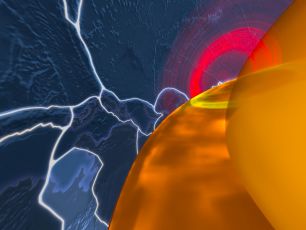The California Academy of Sciences (CAS) opened their latest exhibit Earthquake on May 26. The exhibit, occupying the entire west wing of the museum, features a walk-through Earth and a shake house as well as explores topics such as mantle convection, seismic tomography, plate boundaries, tectonic impacts on evolution, and earthquake preparedness. Its companion show, Evidence of a Restless Planet at the Morrison Planetarium, explores the forces that transform the surface of our planet including accurate, data-driven visualizations in a dramatic immersive video format on the 75-foot "full-dome" digital screen. For the show, scientists at Lawrence Livermore National Laboratory (LLNL) calculated earthquake ground motions of the 1906 San Francisco M7.9 earthquake and a possible M 7.05 Hayward Fault scenario using WPP (an elastic finite difference code of seismic simulations developed at LLNL) and the CIG maintained code SPECFEM3D_GLOBE (developed by Princeton University, CNRS/Aix-Marseille and others). The SPECFEM3D_GLOBE calculation for the 1906 earthquake shows the surface ground motions as well as motions along a radial cross-section paralleling the San Andreas Fault on the scale of North America. The exhibit and planetarium show will remain open for over a year. Make time to visit this exciting exhibit during Fall AGU.

A scene from the CAS "Earthquake" show viewing ground motions at the surface (red) and a along a radial cross-section of the Earth (yellow) for the M 7.9 1906 San Francisco earthquake.